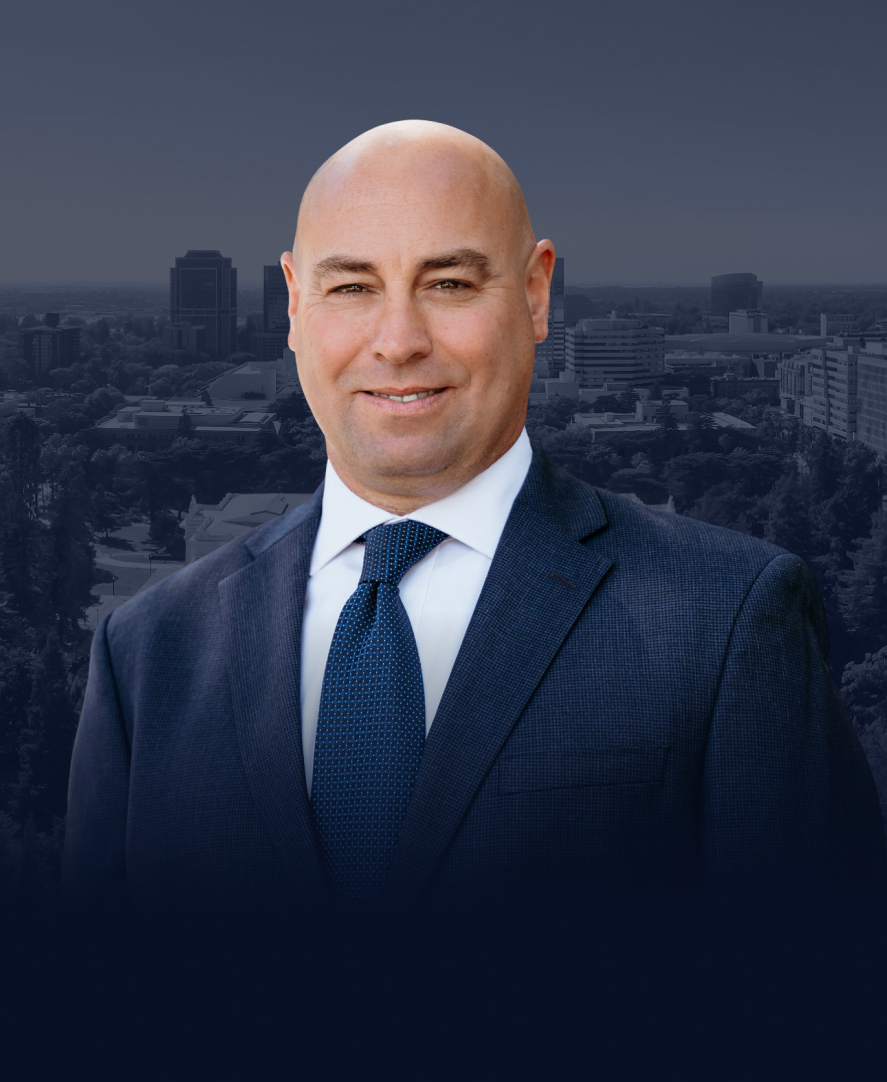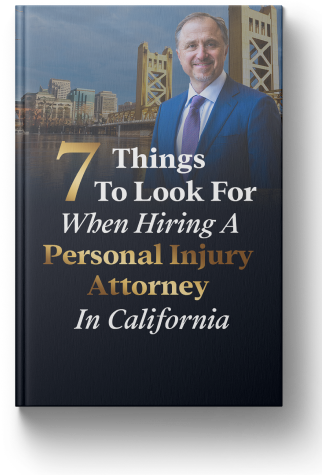Our client, was involved in two separate incidents 10 days apart in May 2012. The first incident involved a wooden garage door falling on the client’s back and pinning him to a truck and the second incident involved our client riding as a passenger in a truck that was rear-ended 10 days later.
 At the time the client was injured, he was 42 years old and had recently moved from Washington State to California. Brian was in the middle of a work comp retraining program that brought him to Sacramento for an accounting/business program at MTI in Sacramento. In 2002 our client was injured at work and ultimately had to have two neck surgeries due to his injuries. Later, in 2008, our client was injured again at work which disabled him from working as a finish carpenter. The second work injury ultimately lead to two shoulder surgeries and two additional neck surgeries. By 2012, our client had two levels at his neck fused (4 prior neck surgeries) and screws in his right shoulder. Due to his previous injuries and then to the injuries he suffered as a result of the garage door falling on his back, he did not work from 2008 until September 2015.
At the time the client was injured, he was 42 years old and had recently moved from Washington State to California. Brian was in the middle of a work comp retraining program that brought him to Sacramento for an accounting/business program at MTI in Sacramento. In 2002 our client was injured at work and ultimately had to have two neck surgeries due to his injuries. Later, in 2008, our client was injured again at work which disabled him from working as a finish carpenter. The second work injury ultimately lead to two shoulder surgeries and two additional neck surgeries. By 2012, our client had two levels at his neck fused (4 prior neck surgeries) and screws in his right shoulder. Due to his previous injuries and then to the injuries he suffered as a result of the garage door falling on his back, he did not work from 2008 until September 2015.
The first incident in our case with our client took place at a home that he and his wife had rented in Sacramento, California from the Defendant. The incident involved a spring/hinged wood garage door that became unhinged and ultimately fell on our client’s back, pinning him to a truck, when he was in his garage. That night, after the door fell on him, he went to the Emergency Room complaining of severe low back pain and left leg weakness. He did not have any visible bruising at the time and his CT scans and X-Rays showed no fractures. He was given four injections of pain medication, a diagnosis of “a contusion” and a prescription for additional pain medication. For the next 10 days, our client stayed home and did not return to the doctor.
On the 10th day from the garage door incident, he was riding as a passenger in a pickup truck. At a stop, the truck our client was riding in was the last vehicle to be rear-ended in a four-car rear-end crash. Ten days after the rear-end crash, he returned to the Emergency Room complaining of low back pain and left leg weakness.
He ultimately got an MRI that showed he had a small disc herniation at L5-S1. He tried conservative treatment (traction, physical therapy, epidural steroid injections and a discogram) which gave him little to no relief from his pain and symptoms. He sought out a second opinion from another specialist where another epidural steroid injection was administered. Like the first injection, this one gave him no relief and it was recommended he have a microdiscectomy and laminectomy.
In December 2013, our client had the recommended surgery and initially found, that it provided him great relief for his leg pain and some relief of his low back pain. Unfortunately, about 6-9 months later, his symptoms returned and he was back at square one. Because he needed to provide for his family, he went to work as a commercial roofer in September 2015 and worked for two years until his pain reached a point he could no longer tolerate.
In 2017, six weeks before trial, he underwent a one level anterior fusion at L5-S1. At the time of trial, the surgery appeared to have been a success as he has no leg symptoms, very little low back pain and testified at trial he is doing great and is off pain meds.
Brian told all of his medical providers his injuries started from the car crash and never mentioned the garage door incident to any of them. He also testified at deposition that his symptoms from the garage door incident resolved prior to the car crash.
The Defendant in the car collision accepted responsibility for his actions and entered into a “Mary Carter” agreement after tendering their remaining policy limits of $285,000. In great contrast, the homeowner Defendants maintained throughout the course of the case that Brian was the cause of his own injury, or was never truly injured by the garage door in the first place. Defendant homeowners refused to put forth a legitimate offer. Their only offer until the eve of trial was $5,000 and increased to $50,000. Their policy limits were $500,000 which were demanded multiple times.
At trial, Mr. Demas worked day and night to provide jurors with a mountain of evidence through photos, emails, and testimony from the homeowner defendants themselves that our client’s injury was a result of the homeowner’s negligence. After 12 days of trial and 2 days of deliberations, jurors rejected the homeowner defendant’s arguments when all 12 returned the verdict that the homeowners were negligent and that their negligence was a substantial factor in causing our client’s injury. The jury found the defendant homeowners 93% responsible for his injury and awarded him all the economic damages asked for (approximately $800,00) and over $2,000,000 in non-economic damages. The final verdict with costs and interest against the homeowner defendants will be close to $3,000,000.








